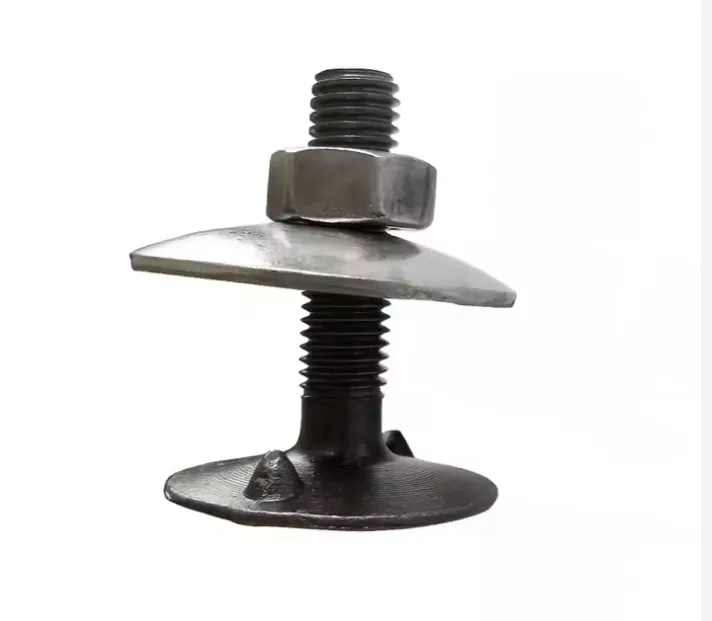

High-Quality M36 Flat Washer for Enhanced Stability and Load Distribution in Mechanical Applications
Jul . 27, 2024 14:07 Back to list
High-Quality M36 Flat Washer for Enhanced Stability and Load Distribution in Mechanical Applications
Understanding the Flat Washer The M36 Standard
Flat washers are essential components in various mechanical and construction applications, serving a critical role in distributing loads and providing support for bolts and nuts. Among the various sizes available, the M36 flat washer is notable for its specific dimensions and applications. In this article, we will explore what an M36 flat washer is, its features, materials, uses, and the importance of selecting the right washer for your projects.
What is an M36 Flat Washer?
The designation M36 refers to a flat washer designed to fit a metric bolt with a nominal diameter of 36 millimeters. Flat washers are typically used in conjunction with a bolt to prevent damage to the surface being fastened and to provide additional strength and support. An M36 washer has a central hole that is larger than the bolt’s diameter, allowing it to slide freely while distributing the load over a broader area.
Features and Specifications
M36 flat washers come in various thicknesses and materials, which influence their performance and suitability for different applications. The standard specifications follow the International Organization for Standardization (ISO) guidelines, such as ISO 7089 for general-purpose washers or ISO 887 for heavy-duty applications. The main features to consider when selecting an M36 washer include
1. Outer Diameter Typically, the outer diameter of an M36 washer is larger than the bolt’s diameter, usually around 80mm, to ensure effective load distribution. 2. Inner Diameter The inner diameter is precisely designed to fit a 36mm bolt, providing a snug fit that prevents movement during use. 3. Thickness The thickness varies, with standard options ranging from 3mm to 6mm, depending on the specific load requirements.
Material Choices
The material of the washer plays a vital role in determining its strength, durability, and resistance to environmental factors. Common materials used for M36 flat washers include
flat washer m36

- Steel A popular choice due to its high tensile strength and availability, often treated with coatings to enhance corrosion resistance. - Stainless Steel Ideal for applications exposed to moisture or corrosive environments, stainless steel washers provide excellent longevity and resistance to rust. - Plastic Used in specific applications, particularly where electrical insulation is required or for lightweight assemblies.
Applications of M36 Flat Washers
M36 flat washers are widely utilized across multiple industries, including construction, machinery, automotive, and electronics. Their versatility allows them to be used in applications such as
- Structural Engineering In constructions, M36 washers are often used to secure beams and other large components. - Automotive Assembly They play a crucial role in automotive manufacturing, where large bolts must be fastened securely to ensure safety and performance. - Machinery Any machinery that involves heavy loads or vibration often utilizes flat washers to help stabilize and secure various components.
Importance of Selecting the Right Washer
Choosing the correct flat washer is paramount for ensuring the integrity of the assembly. An improperly sized or incompatible washer may lead to bolt loosening, uneven load distribution, and ultimately, failure of the assembly under stress. Factors like the environment, load requirements, and specific application conditions should always be considered when selecting your M36 washer.
Conclusion
The M36 flat washer, while often overlooked, is a crucial component in many mechanical and construction applications. By understanding its specifications, materials, functionalities, and proper selection criteria, engineers and builders can ensure that their assemblies are secure, stable, and reliable. Whether in automotive manufacturing, construction projects, or machinery assembly, the M36 flat washer remains an integral part of the engineering landscape, emphasizing the importance of detail and quality in mechanical design.
Latest news
-
High-Strength Hot Dip Galvanized Bolts - Hebei Longze | Corrosion Resistance, Customization
NewsJul.30,2025
-
Hot Dip Galvanized Bolts-Hebei Longze|Corrosion Resistance&High Strength
NewsJul.30,2025
-
High-Strength Hot-Dip Galvanized Bolts-Hebei Longze|Corrosion Resistance&High Strength
NewsJul.30,2025
-
Hot Dip Galvanized Bolts-Hebei Longze|Corrosion Resistance&High Strength
NewsJul.30,2025
-
Hot Dip Galvanized Bolts - Hebei Longze | Corrosion Resistance, High Strength
NewsJul.30,2025
-
High-Strength Hot Dip Galvanized Bolts-Hebei Longze|Corrosion Resistance, Grade 8.8
NewsJul.30,2025

